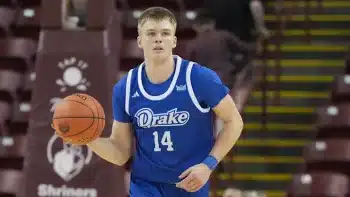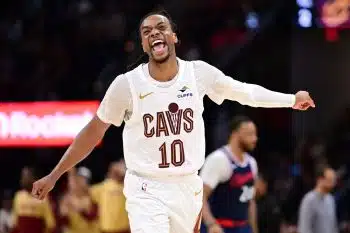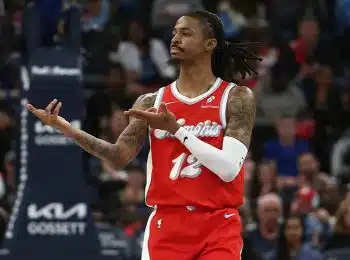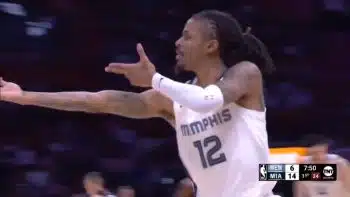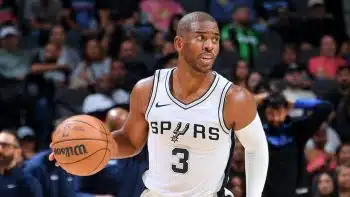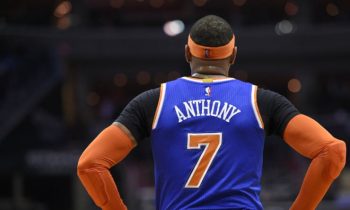NBA
Grading Each of the Knicks’ Free Agent Signings
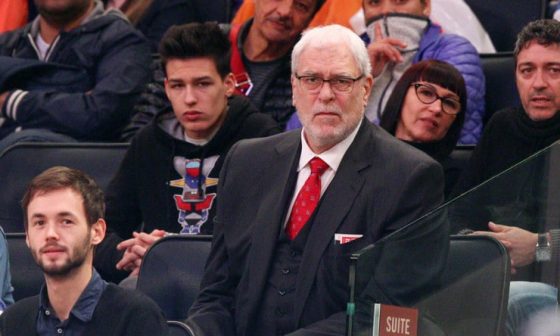
Looking to leave a nightmarish 2014-15 season in the rearview mirror, New York Knicks president Phil Jackson and general manager Steve Mills have re-tooled their roster.
Although New York didn’t land a superstar this summer, they were able to re-stock their shelves by evenly spreading out the $28 million in cap space they had to spend.
Below, Tommy Beer grades each of the free agent signings the Knicks made this offseason.
Robin Lopez – $54 million over four years:
For those Knicks fans who were hoping that Phil Jackson would make a major splash this summer by signing one the top-tier superstars on the market, walking away from free agency with Lopez as the best new addition was viewed by some as a bit of a bummer. However, all things considered, and looking at the offseason a whole, Jackson deserves praise for shrewdly allocating his money in an attempt to build a well-balanced team.
Too often in the past, New York had thrown big money at the biggest name available – defense and team-fit be dammed. This summer, Jackson took a big-picture approach and targeted specific skill sets. Some fans may have been disappointed that New York didn’t land Greg Monroe, but Lopez is likely a better fit along the Knicks frontline. With a below-average defender like Carmelo Anthony at one forward spot, and an aging Jose Calderon as the starting point guard, opponents will be to get into the pain and wreak havoc. Having a dependable rim-protector like Lopez is quite simply a necessity. And while Lopez’s rebounding numbers don’t jump off the page, his aggressive box-outs often results in added rebounds for his teammates.
The Knicks have been near the bottom of the league in defensive efficiency basically since the day Jeff Van Gundy skipped town back in December of 2001. Year after year, the NBA’s elite teams and championship contenders are those teams that defend well on a consistent basis. The proof is in the pudding: Each of the last 14 (and 19 of the last 20) NBA champions have all finished in the top-10 in defensive efficiency.
Offensively, Lopez will never be the focal point of his team’s attack, and he’s perfectly comfortable with that reality. In this respect, he’s a good fit alongside a volume-shooter and scorer like Carmelo Anthony (and Kristaps Porzingis down the road). Lopez is perfectly content to continually set hard screens in order to open up teammates. He is also dangerous rolling to the basket after setting said screens. Because he doesn’t force shots and possesses a soft touch at the rim and a reliable jumper out to 16 feet, Lopez is remarkably efficient on the offensive end. In fact, in 2013-14, Lopez became the first player since Amar’e Stoudemire in 2007-08 to shoot above 55 percent from the floor and 80 percent from the free throw line. In addition, Lopez is also the only player in the NBA to shoot at least 53 percent from the field and 77 percent from the charity stripe in each of the last three seasons.
A salary of $13.5 million per season may seem like a lot for a player who posts relatively pedestrian standard stats, but that’s the going rate for starting-caliber centers. Although it wasn’t a sexy signing, it was a solid, smart addition considering the Knicks’ needs and the overall makeup of the roster.
Grade: B+
Arron Afflalo – $16 million over two years (player option for 2016-17 season):
Afflalo also didn’t generate excessive excitement within the Knicks’ fan base, but, like Lopez, he does fill a necessary need. And considering the market set in free agency this summer, his contract certainly seems reasonable. For instance, consider that DeMarre Carroll received $60 million over four years, and Wesley Matthews (coming off a devastating Achilles injury) inked a deal worth $70 million over four years. In this context, the Afflalo contract certainly seems reasonable considering his previously exhibited production and skill set.
Afflalo has, at points, put up impressive numbers during his eight-year NBA career. In fact, just two years ago during the 2013-14 season, Afflalo was just one of 18 players in the entire league to average at least 18 points, three rebounds and three assists per game. Just six months ago, at the February trade deadline, he was traded from the Denver Nuggets to the Portland Trail Blazers in exchange for a future first-round draft pick.
However, the knock on Afflalo is that he has often tallied big stats on bad teams. Furthermore, Afflalo is coming off of a terribly disappointing season. Last year, Afflalo became just the second player this decade to average at least 32 minutes a night, yet post a PER below 11.0 in that same season. In fairness, nagging injuries were undeniably an issue and contributed to his poor, inefficient performance.
So, does Afflalo have a bounce back season in him? Or is his production tied to his (potentially declining) athleticism?
The Knicks hedged their bet by not committing to him long-term.
Which Arron Afflalo are the Knicks getting? If he’s fully healthy, that’s solid value at $8 million next season. If not, his contract is by no means cap-crippling.
Grade: B-
Derrick Williams – $10 million over two years:
Scouts drooled over Williams’ athleticism coming out of Arizona, and the Minnesota Timberwolves eventually selected him second overall in the 2011 NBA draft. However, the Knicks’ pursuit of Williams was surprising because he has failed to even approach the lofty expectations he entered the league with.
Williams is an undeniably impressive athlete with great physical tools, and has shown brief flashes of his enticing talent. The issue is that the periods of consistent, sustained production have been few and far between. He’s been relatively ineffective and inefficient on both ends of the floor at the pro level. Last season, his rebound and assist rates hit frighteningly low levels.
The Knicks committed $5 million this season when there were still a number of more established veterans available. It remains unknown who the Knicks were bidding against, as Williams didn’t seem to have many suitors.
Can that tantalizing, untapped potential be realized in New York? Phil Jackson and company clearly must have seen something special in him and believe they can rejuvenate his career. This is an expensive roll of the dice that has a “boom or bust” feel to it.
Grade: C-
Kyle O’Quinn – $16 million over 4 years:
The Knicks’ best value signing of the summer will likely end up being Kyle O’Quinn. A native New Yorker (born and raised in Queens), O’Quinn was a second-round pick by the Orlando Magic in 2012. Coming out of Norfolk State, he played sporadically over his first three NBA seasons in Orlando, but performed relatively well when given extended minutes. O’Quinn’s career per-36 minute averages (13 points, 10.5 rebounds and 2.1 blocks) suggest he has a chance to be a valuable rotation player.
O’Quinn is versatile enough to give the Knicks minutes at both the power forward and center spots. He possesses limited athleticism in his bulky frame, but has a high-intensity motor and brings relentless energy on a nightly basis.
The best aspect of the deal from a New York perspective is that the Knicks were able to lock-up O’Quinn for the next four seasons. With the salary cap set to spike upwards of $90 million by next season, being able to sign quality contributors to affordable contracts that extend four years into the future is how smart teams maximize value. This will likely be viewed as a smart gamble by Phil Jackson, as there is potentially a terrific payoff, yet very little risk involved.
Consider this: In 2017-18, when the salary cap will purportedly jump up to $108 million, O’Quinn (who will then be 27 years old) will account for just 3.7 percent of the Knicks total cap space. If O’Quinn becomes even a decent role player in New York, that contract will return astonishing value.
Grade: A-
Sasha Vujacic – veteran’s minimum ($947,000) for one season:
This is certainly a surprising signing by the Knicks, as Vujacic has played a grand total of 10 minutes in the NBA since 2011 (when he averaged 9.8 points per game for the Lakers and Nets). It remains to be seen how much he has left in the tank.
However, Vujacic does fill a position of need, as the Knicks will need knock-down shooters to help space the floor. Tim Hardaway Jr., who was traded away this offseason, led the Knicks in three-point makes last season. Langston Galloway was actually second on the Knicks in made threes, with just 62. As a point of comparison, the Houston Rockets had four different players on their team who knocked down at least 115 three-pointers last season.
Vujacic was always a solid perimeter gunner during his years in the NBA, and he shot the ball well playing for Istanbul BSB last season. Per Synergy Sports, he made 42 percent of his spot-up jumpers, and 45 percent of his pull-ups. He’s obviously also familiar with the Triangle Offense, as he spent the majority of his NBA career under the tutelage of Phil Jackson in L.A. In addition, considering his experience as a foreign-born player that made the transition to the NBA as a young man in a major market, he may be able to help mentor prized rookie Kristaps Porzingis.
Grade: C
Kevin Seraphin – $2.8 million for one season:
Like Robin Lopez, Seraphin will supply the Knicks with some needed rim-protection. Obviously, adding young, athletic big men was a priority for Phil Jackson and Steve Mills this summer.
This summer, New York added four players who are 25 or younger and measure in at least 6’8. The Knicks didn’t have any such young bigs on their roster last season.
Seraphin also possesses a promising offensive arsenal. In today’s changing NBA, he’s one of the NBA’s rare big men who looks to score on the low block with his back to the basket. Like Kyle O’Quinn, Seraphin has posted impressive per-minute averages in his brief NBA career. Over his last two seasons, he’s averaged 15.3 points, 8.3 rebounds and 1.7 blocks per-36 minutes.
He’s still a bit raw, and a propensity to foul too frequently has been a hindrance, but considering his upside, many pundits predicted he’d sign for far more than the $2.8 million room exception when free agency began last month. Ideally, Jackson would have been able to lock him up for more than just one season at that bargain price, but Seraphin undoubtedly wanted a chance to prove himself and hit the market again as an unrestricted free agent in 2016.
Grade: B
What grades would you give Phil Jackson for the moves he made during his first offseason with significant cap space? Leave a comment below.
